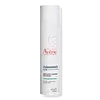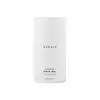What's inside
What's inside
 Key Ingredients
Key Ingredients

 Benefits
Benefits

 Concerns
Concerns

 Ingredients Side-by-side
Ingredients Side-by-side

Benzoyl Peroxide
Water
Skin ConditioningPropanediol
SolventDimethyl Isosorbide
SolventGlycerin
Humectant1,2-Hexanediol
Skin ConditioningAcrylamide/Sodium Acryloyldimethyltaurate Copolymer
Emulsion StabilisingIsohexadecane
EmollientHydroxyacetophenone
AntioxidantHylocereus Undatus Fruit Extract
Skin ConditioningPolysorbate 80
EmulsifyingPolyglyceryl-2 Isostearate
EmulsifyingXanthan Gum
EmulsifyingSodium Citrate
BufferingTrisodium Ethylenediamine Disuccinate
Citric Acid
BufferingDiethylhexyl Sodium Sulfosuccinate
CleansingCarbomer
Emulsion StabilisingSodium Hydroxide
BufferingHyaluronic Acid
HumectantEthylhexylglycerin
Skin ConditioningMorinda Citrifolia Extract
AstringentPhenoxyethanol
PreservativeDimethicone
EmollientSodium Metabisulfite
AntioxidantPEG-40 Stearate
EmulsifyingSilica
AbrasiveSorbitan Stearate
EmulsifyingTocopherol
AntioxidantBenzoyl Peroxide, Water, Propanediol, Dimethyl Isosorbide, Glycerin, 1,2-Hexanediol, Acrylamide/Sodium Acryloyldimethyltaurate Copolymer, Isohexadecane, Hydroxyacetophenone, Hylocereus Undatus Fruit Extract, Polysorbate 80, Polyglyceryl-2 Isostearate, Xanthan Gum, Sodium Citrate, Trisodium Ethylenediamine Disuccinate, Citric Acid, Diethylhexyl Sodium Sulfosuccinate, Carbomer, Sodium Hydroxide, Hyaluronic Acid, Ethylhexylglycerin, Morinda Citrifolia Extract, Phenoxyethanol, Dimethicone, Sodium Metabisulfite, PEG-40 Stearate, Silica, Sorbitan Stearate, Tocopherol
Water
Skin ConditioningPropanediol
SolventSea Silt Extract
Skin ConditioningHydrolyzed Hyaluronic Acid
HumectantAdenosine
Skin ConditioningOlivine Extract
Skin ConditioningTremella Fuciformis Sporocarp Extract
AntioxidantBetaine
HumectantGlycerin
HumectantCarbomer
Emulsion StabilisingHydroxyethylcellulose
Emulsion StabilisingEthylhexylglycerin
Skin ConditioningCaprylyl Glycol
EmollientSodium Citrate
BufferingTocopherol
AntioxidantBenzyl Alcohol
PerfumingGlyceryl Caprylate
EmollientGlyceryl Undecylenate
EmollientPotassium Sorbate
PreservativeDisodium Phosphate
BufferingSodium Phosphate
BufferingSodium Metabisulfite
AntioxidantPhenoxyethanol
PreservativeSodium Hydroxide
BufferingSodium Nitrate
SoothingWater, Propanediol, Sea Silt Extract, Hydrolyzed Hyaluronic Acid, Adenosine, Olivine Extract, Tremella Fuciformis Sporocarp Extract, Betaine, Glycerin, Carbomer, Hydroxyethylcellulose, Ethylhexylglycerin, Caprylyl Glycol, Sodium Citrate, Tocopherol, Benzyl Alcohol, Glyceryl Caprylate, Glyceryl Undecylenate, Potassium Sorbate, Disodium Phosphate, Sodium Phosphate, Sodium Metabisulfite, Phenoxyethanol, Sodium Hydroxide, Sodium Nitrate
 Reviews
Reviews

Ingredients Explained
These ingredients are found in both products.
Ingredients higher up in an ingredient list are typically present in a larger amount.
Carbomer is a polymer of acrylic acid. Its main role is to create a gel consistency.
A high amount of carbomer can cause pilling or balling up of products. Don't worry, most products contain 1% or less of carbomer.
Ethylhexylglycerin (we can't pronounce this either) is commonly used as a preservative and skin softener. It is derived from glyceryl.
You might see Ethylhexylglycerin often paired with other preservatives such as phenoxyethanol. Ethylhexylglycerin has been found to increase the effectiveness of these other preservatives.
Glycerin is already naturally found in your skin. It helps moisturize and protect your skin.
A study from 2016 found glycerin to be more effective as a humectant than AHAs and hyaluronic acid.
As a humectant, it helps the skin stay hydrated by pulling moisture to your skin. The low molecular weight of glycerin allows it to pull moisture into the deeper layers of your skin.
Hydrated skin improves your skin barrier; Your skin barrier helps protect against irritants and bacteria.
Glycerin has also been found to have antimicrobial and antiviral properties. Due to these properties, glycerin is often used in wound and burn treatments.
In cosmetics, glycerin is usually derived from plants such as soybean or palm. However, it can also be sourced from animals, such as tallow or animal fat.
This ingredient is organic, colorless, odorless, and non-toxic.
Glycerin is the name for this ingredient in American English. British English uses Glycerol/Glycerine.
Learn more about GlycerinPhenoxyethanol is a preservative that has germicide, antimicrobial, and aromatic properties. Studies show that phenoxyethanol can prevent microbial growth. By itself, it has a scent that is similar to that of a rose.
It's often used in formulations along with Caprylyl Glycol to preserve the shelf life of products.
Propanediol is an all-star ingredient. It softens, hydrates, and smooths the skin.
It’s often used to:
Propanediol is not likely to cause sensitivity and considered safe to use. It is derived from corn or petroleum with a clear color and no scent.
Learn more about PropanediolSodium Citrate is the sodium salts of citric acid. In skincare, it is used to alter pH levels and acts as a preservative.
Its main functions are to maintain the pH of a product and neutralize metal ions.
The acidity of our skin is maintained by our glands and skin biome; normal pH level of skin is slightly acidic (~4.75-5.5).
Being slightly acidic allows our skin to create an "acid mantle". This acid mantle is a thin barrier that protects our skin from bacteria and contaminants.
Learn more about Sodium CitrateSodium Hydroxide is also known as lye or caustic soda. It is used to adjust the pH of products; many ingredients require a specific pH to be effective.
In small amounts, sodium hydroxide is considered safe to use. However, large amounts may cause chemical burns due to its high alkaline.
Your skin has a natural pH and acid mantle. This acid mantle helps prevent harmful bacteria from breaking through. The acid mantle also helps keep your skin hydrated.
"Alkaline" refers to a high pH level. A low pH level would be considered acidic.
Learn more about Sodium HydroxideSodium metabisulfite is also known as Sodium Pyrosulfite. It is a preservative, antioxidant, and disinfectant.
As a preservative, it helps stabilize cosmetic formulas without affecting their color or scent.
Tocopherol (also known as Vitamin E) is a common antioxidant used to help protect the skin from free-radicals and strengthen the skin barrier. It's also fat soluble - this means our skin is great at absorbing it.
Vitamin E also helps keep your natural skin lipids healthy. Your lipid skin barrier naturally consists of lipids, ceramides, and fatty acids. Vitamin E offers extra protection for your skin’s lipid barrier, keeping your skin healthy and nourished.
Another benefit is a bit of UV protection. Vitamin E helps reduce the damage caused by UVB rays. (It should not replace your sunscreen). Combining it with Vitamin C can decrease sunburned cells and hyperpigmentation after UV exposure.
You might have noticed Vitamin E + C often paired together. This is because it is great at stabilizing Vitamin C. Using the two together helps increase the effectiveness of both ingredients.
There are often claims that Vitamin E can reduce/prevent scarring, but these claims haven't been confirmed by scientific research.
Learn more about TocopherolWater. It's the most common cosmetic ingredient of all. You'll usually see it at the top of ingredient lists, meaning that it makes up the largest part of the product.
So why is it so popular? Water most often acts as a solvent - this means that it helps dissolve other ingredients into the formulation.
You'll also recognize water as that liquid we all need to stay alive. If you see this, drink a glass of water. Stay hydrated!
Learn more about Water